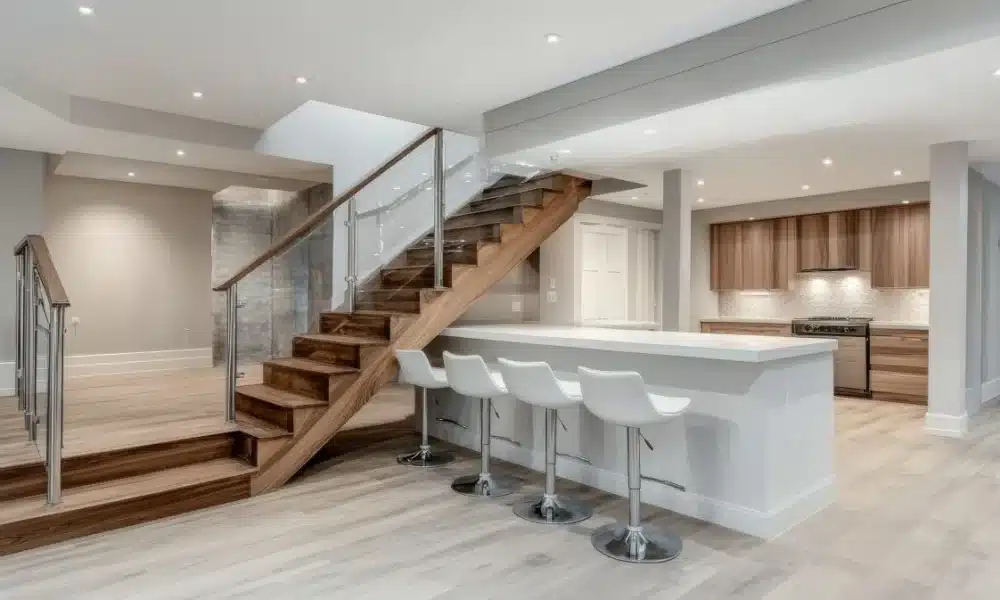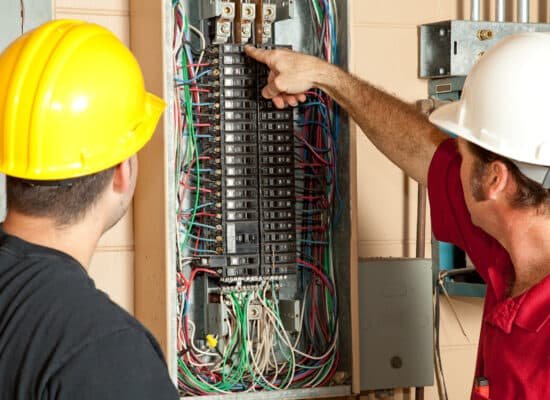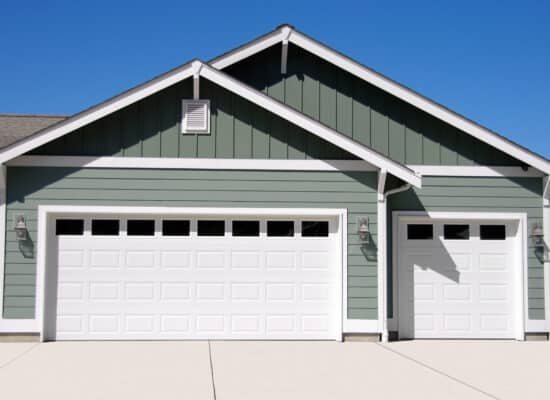In the world of interior design, there’s an unsung hero lurking beneath our floors. Often overlooked, basement staircases hold the potential to be more than just a functional passageway—they can become a centerpiece, a conversation starter, and, yes, even a work of art. Imagine descending a basement staircase that transports you, not just physically but also mentally, into a realm of creativity and innovation. It’s time to elevate these architectural elements from the utilitarian to the extraordinary, and there’s no better starting point than with the transformative power of design.
Picture this: A dazzling spiral staircase that winds elegantly into your basement’s depths, each step illuminated by soft, ambient lighting. Or envision a sleek, minimalist floating basement staircase that seems to defy gravity, drawing admiring glances from all who enter. With an array of styles, materials, and finishes available today, basement staircases can become stunning visual masterpieces. Whether your tastes lean toward the rustic charm of reclaimed wood or the modern elegance of glass and steel, the right design can redefine the experience of exploring your home. Dive into this blog post and discover how the right inspiration and planning can convert this often-underappreciated space into something spectacular, adding both character and value to your abode.
Table Of Content
- Embracing the Elegance of Spiral Staircases
- Creating Illusions with Floating Staircase Designs
- Redefining Rustic Charm with Reclaimed Wood Stairs
- Modernizing Your Basement with Glass and Steel Staircases
- Playing with Patterns: Unique Railing Designs
- Illuminating Your Path: Lighting Ideas for Basement Staircases
- Space-Saving Solutions: Compact Staircase Designs
- Incorporating Greenery: Plant-lined Staircase Ideas
- Enhancing Safety and Style: Handrail and Balustrade Options
Embracing the Elegance of Spiral Staircases
Basement staircases are not just pathways; they are opportunities for creativity and personalization.
Consider how basement staircases can influence the flow and aesthetic of your home.
These basement staircases can be a perfect blend of style and functionality.
Such basement staircases create an airy feel while still being functional.
Floating basement staircases are a great way to maximize visual space.
These unique basement staircases are a conversation starter in any home.
Reclaimed wood basement staircases offer character that new materials cannot replicate.
These stylish basement staircases enhance the overall atmosphere of the space.
Modern glass and steel basement staircases reflect current design trends.
When it comes to basement staircases, why settle for ordinary when you can embrace the elegance of a spiral staircase? These architectural wonders add a touch of sophistication and charm to any space. With their graceful curves and mesmerizing design, spiral staircases create a sense of movement and flow that is truly captivating.
One of the key advantages of spiral staircases is their ability to save space. Unlike traditional straight staircases, spirals take up less room, making them ideal for smaller basements or tight corners. This compact design doesn’t compromise on style either. In fact, spiral staircases are often considered a statement piece, adding a unique focal point to your home.
When choosing a spiral staircase for your basement, consider the material and finish that best complements your overall aesthetic. For a classic look, opt for wrought iron or wood. These materials exude timeless elegance and can be customized to match your existing decor. If you prefer a more contemporary feel, stainless steel or glass might be the perfect choice. These materials lend themselves well to modern designs and create an open and airy atmosphere.
To enhance the allure of your spiral staircase even further, consider incorporating lighting elements. Soft LED lights embedded in each step can create an ethereal glow that guides you down into your basement with style. Alternatively, strategically placed spotlights can highlight the intricate details of the staircase itself.
With its combination of functionality and beauty, embracing the elegance of a spiral staircase will undoubtedly transform your basement into an enchanting space that leaves guests in awe.
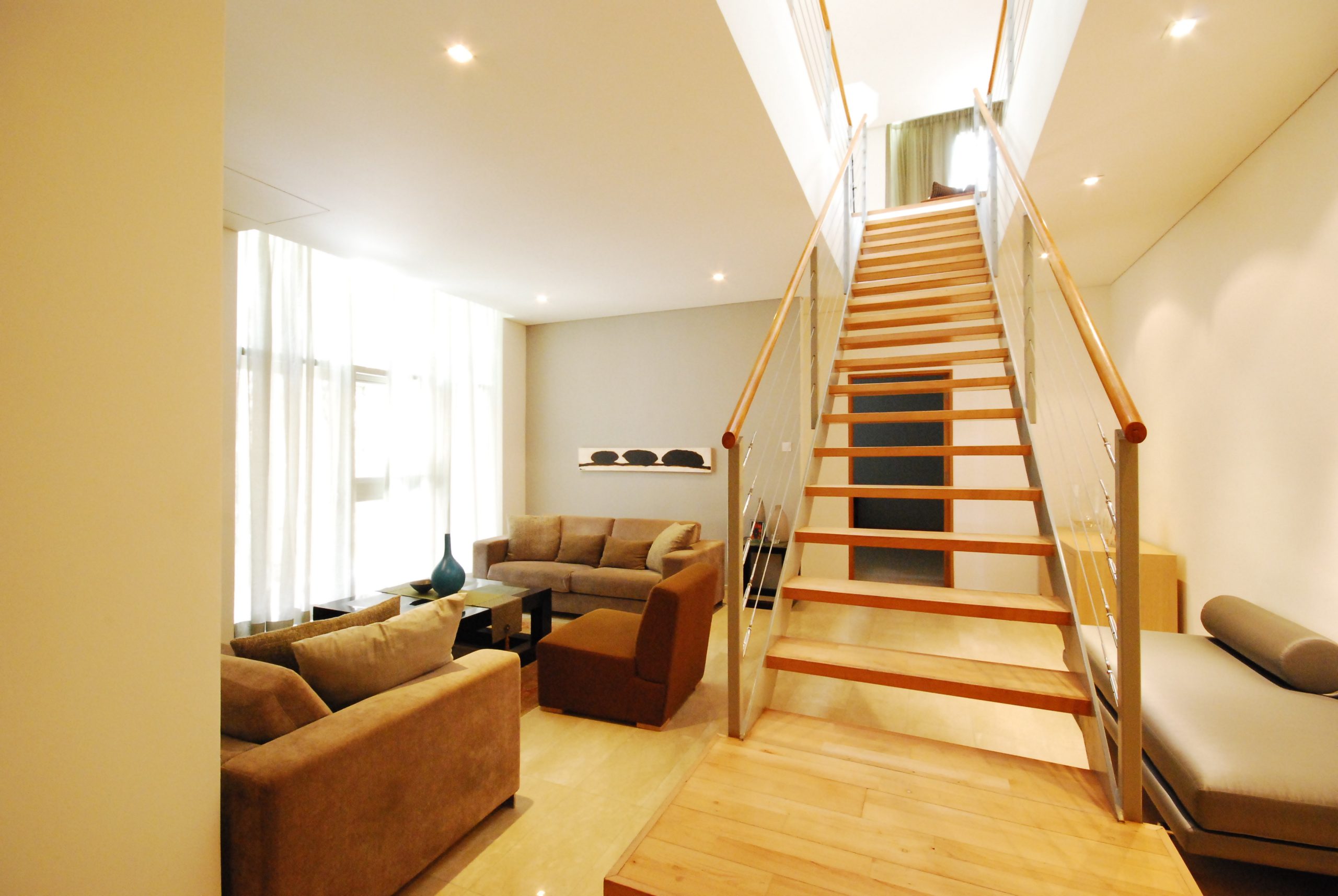
Creating Illusions with Floating Staircase Designs
If you’re looking to make a bold statement with your basement staircase design, look no further than floating staircases. These architectural marvels create the illusion of stairs floating in mid-air, adding a touch of magic and intrigue to your home.
One of the key advantages of floating staircases is their ability to create an open and spacious feel. By eliminating the need for traditional risers and stringers, these staircases allow light to flow freely, making your basement appear larger and more inviting. The absence of visible support structures also adds a sense of weightlessness, giving the impression that the stairs are suspended in space.
When it comes to materials, the options are endless. From sleek glass treads to minimalist metal frameworks, you can customize your floating staircase to suit your personal style. For a truly dramatic effect, consider combining different materials or incorporating unexpected elements such as wood accents or LED lighting.
While floating staircases are undeniably eye-catching, it’s important to ensure they meet safety standards. Consult with a professional designer or architect who specializes in staircase construction to ensure that your design not only looks stunning but also provides stability and durability.
By choosing a floating staircase for your basement, you’ll create an illusion that will captivate anyone who enters your home. Prepare for gasps of amazement as guests marvel at this architectural masterpiece.
Redefining Rustic Charm with Reclaimed Wood Stairs
Compact basement staircases are essential for maximizing smaller spaces.
With thoughtful design, compact basement staircases can be both practical and beautiful.
Plant-lined basement staircases enhance both beauty and air quality.
Integrating plants with your basement staircase creates a vibrant atmosphere.
With the right handrails, your basement staircases will be safe and stylish.
Choosing the right balustrade will enhance your basement staircases even more.
Consider handrails that reflect your unique style alongside your basement staircases.
If you’re drawn to the warmth and character of natural materials, consider redefining rustic charm with reclaimed wood stairs in your basement. These unique pieces not only add a touch of history but also contribute to sustainable design practices by repurposing materials that would otherwise go to waste.
Reclaimed wood stairs have a distinct beauty that cannot be replicated by new materials. Each plank tells its own story through its weathered texture and unique markings. Whether you choose salvaged barn wood or antique flooring boards, these stairs bring a sense of authenticity and warmth to your basement.
One of the advantages of reclaimed wood stairs is their versatility. They can be incorporated into various design styles, from farmhouse to industrial chic. Pair them with wrought iron balusters for a rustic look or combine them with sleek glass railings for a more contemporary feel.
When it comes to maintenance, reclaimed wood stairs require regular care to preserve their beauty. Treat them with a protective sealant to prevent damage from moisture and ensure they withstand the test of time. Additionally, periodic cleaning and refinishing will help maintain their natural luster.
By choosing reclaimed wood stairs for your basement, you’ll not only infuse your space with rustic charm but also contribute to sustainable design practices. Each step you take will be a reminder of the history and craftsmanship that went into creating these stunning architectural elements.
Modernizing Your Basement with Glass and Steel Staircases
If you’re looking to bring a sleek and contemporary vibe to your basement, consider modernizing it with glass and steel staircases. These materials exude sophistication and create an open and airy atmosphere that is perfect for modern living spaces.
Glass staircases are particularly popular for their ability to maximize natural light flow. By allowing light to pass through each step, these staircases create an illusion of transparency, making your basement feel brighter and more spacious. Additionally, glass can be combined with other materials such as stainless steel or wood for added visual interest.
Steel staircases, on the other hand, offer durability and strength while maintaining a clean and minimalist aesthetic. The sleek lines of steel provide a contemporary edge that complements any modern interior design style. Combine steel treads with cable railings or glass balustrades for an ultra-modern look that will leave guests in awe.
When incorporating glass and steel staircases into your basement, it’s important to consider safety. Opt for tempered or laminated glass, which is stronger and less likely to shatter. Additionally, consult with a professional designer or architect to ensure that the staircase meets building codes and structural requirements.
By modernizing your basement with glass and steel staircases, you’ll create a space that is not only visually stunning but also reflects your contemporary style. Prepare to be amazed every time you descend on these architectural masterpieces.
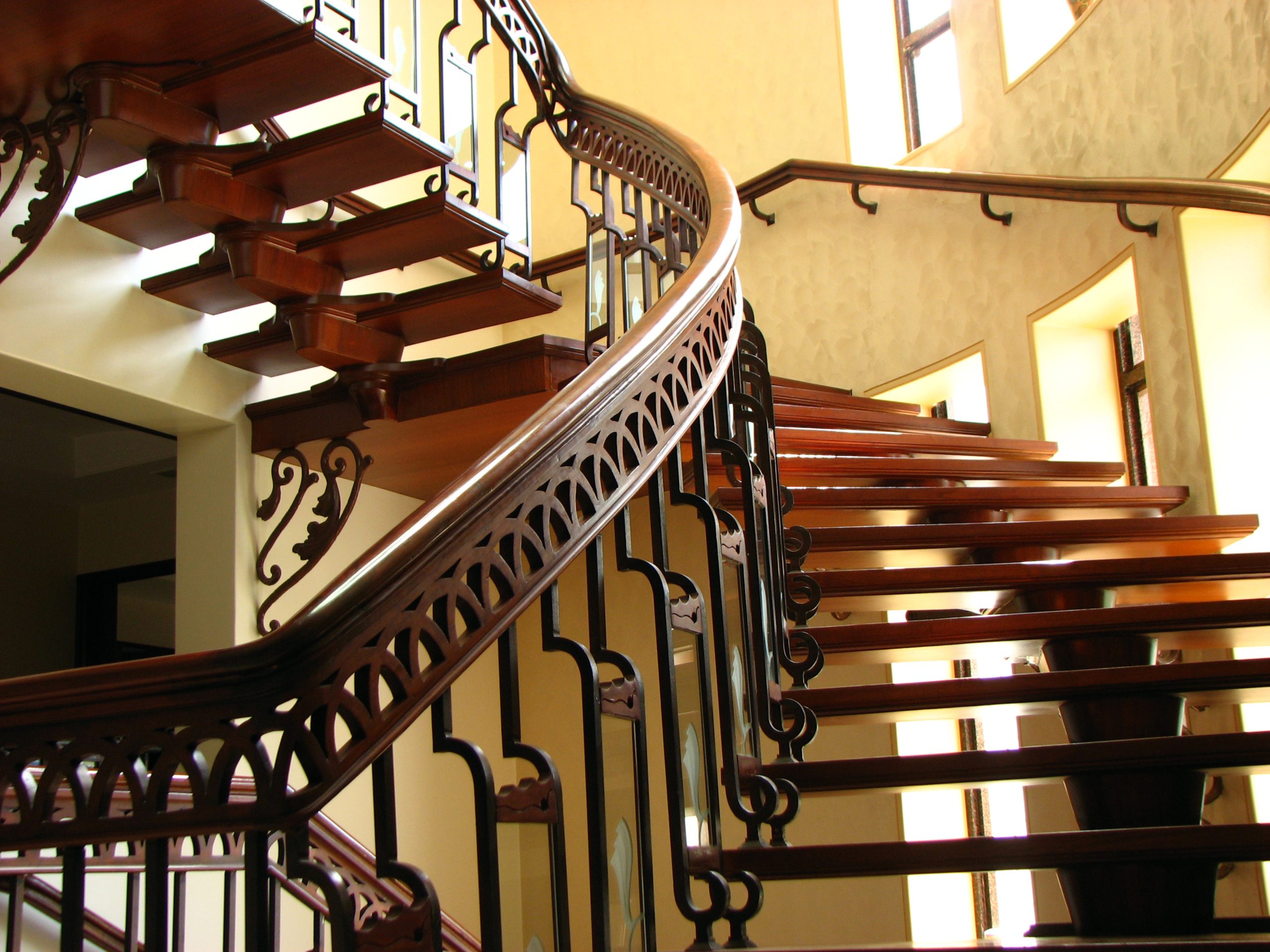
Playing with Patterns: Unique Railing Designs
When it comes to basement staircases, don’t forget about the impact of unique railing designs. Railings are not only functional but also provide an opportunity to add personality and style to your staircase.
One way to make a statement with your railing design is by playing with patterns. Consider intricate wrought iron railings that feature ornate scrollwork or geometric patterns. These designs add a touch of elegance and can become a focal point in your basement.
If you prefer a more contemporary look, explore options such as cable railings or glass balustrades. Cable railings offer a sleek and minimalist aesthetic while providing unobstructed views of your staircase. Glass balustrades, on the other hand, create an open and airy feel while adding a touch of sophistication.
For those who appreciate natural materials, consider incorporating wood balusters into your railing design. From traditional turned spindles to more modern square profiles, wood balusters can be customized to match any design style.
When choosing unique railing designs for your basement staircase, it’s important to consider both aesthetics and safety. Ensure that the design meets building codes and provides adequate support for those using the stairs.
By playing with patterns in your railing design, you’ll add an extra layer of visual interest to your basement staircase. Prepare for compliments as guests admire the intricate details and unique style of your chosen design.
Illuminating Your Path: Lighting Ideas for Basement Staircases
Proper lighting is essential when it comes to basement staircases. Not only does it enhance safety, but it also adds a touch of ambiance and style to your space. Explore these lighting ideas to illuminate your path in a way that is both functional and visually appealing.
One popular lighting option for basement staircases is recessed lighting. These fixtures are installed into the ceiling or walls, providing a soft and even glow that guides you down the stairs. Recessed lights can be strategically placed along the staircase or focused on specific areas such as each step or landing.
If you prefer a more dramatic effect, consider installing LED strip lights along the underside of each step. This creates an ethereal glow that not only enhances safety but also adds a touch of magic to your staircase.
Another creative lighting idea is to incorporate pendant lights above your basement staircase. These hanging fixtures not only provide ample illumination but also serve as decorative elements that add personality and style to your space.
When choosing lighting for your basement staircase, consider the overall ambiance you want to create. Soft, warm light can create a cozy and inviting atmosphere, while cool white light lends itself well to modern and minimalist designs.
By illuminating your path with thoughtful lighting ideas, you’ll transform your basement staircase into a visually stunning feature that enhances both safety and style.
Space-Saving Solutions: Compact Staircase Designs
If you have limited space in your basement, don’t let that stop you from incorporating a stylish staircase. Compact staircase designs offer space-saving solutions without compromising on aesthetics or functionality.
One popular option for small basements is a spiral staircase. As mentioned earlier, spiral staircases take up less room than traditional straight stairs, making them ideal for tight spaces. Their compact design allows you to maximize the available square footage while still adding a visually striking element to your basement.
Another space-saving solution is a ladder staircase. These staircases feature alternating treads that resemble a ladder, allowing you to climb up and down with ease. Ladder staircases are often made of metal or wood and can be folded when not in use, further maximizing space.
If you prefer a more minimalist look, consider floating stairs. These stairs appear to float in mid-air, creating an illusion of openness and spaciousness. Floating stairs can be customized to fit any space and are often made of materials such as glass or metal.
When choosing a compact staircase design for your basement, it’s important to consider safety regulations and building codes. Consult with a professional designer or architect who specializes in small-space solutions to ensure that your chosen design meets all requirements.
By opting for a space-saving staircase design, you’ll make the most of your basement’s limited square footage while still adding an element of style and functionality.
Incorporating Greenery: Plant-lined Staircase Ideas
Add life and vibrancy to your basement staircase by incorporating greenery into its design. Plant-lined staircases not only create a visually stunning display but also bring the benefits of nature indoors.
One way to incorporate greenery into your basement staircase is by installing built-in planters along the sides or underneath each step. These planters can be filled with lush foliage or cascading vines that add texture and color to your space.
If you have limited floor space, consider hanging plants from the ceiling or walls near your staircase. Macrame plant hangers or wall-mounted planters can be strategically placed to create a vertical garden effect.
When choosing plants for your staircase, opt for varieties that thrive in low-light conditions. Some popular options include pothos, snake plants, and ferns. These plants not only require minimal maintenance but also help purify the air, creating a healthier environment.
It’s important to consider the care and maintenance of your plant-lined staircase. Ensure that you have easy access to water and that the planters are properly drained to prevent water damage to your stairs.
By incorporating greenery into your basement staircase, you’ll create a connection with nature and infuse your space with life and vitality.
Enhancing Safety and Style: Handrail and Balustrade Options
When it comes to basement staircases, safety should always be a top priority. However, that doesn’t mean you have to sacrifice style. Explore these handrail and balustrade options that enhance both safety and aesthetics.
One classic option for handrails is wood. Wood handrails provide a warm and traditional look that complements various design styles. From intricately carved balusters to sleek and simple profiles, wood offers endless possibilities for customization.
If you prefer a more modern look, consider stainless steel handrails. Stainless steel not only provides durability but also adds a touch of contemporary elegance to your staircase. Combine stainless steel with glass panels or cable railings for an ultra-modern aesthetic.
Glass balustrades are another popular choice for those seeking a sleek and minimalist look. Glass provides unobstructed views while still providing safety by acting as a barrier between the stairs and the surrounding space.
No matter which handrail or balustrade option you choose, it’s important to ensure that they meet safety regulations. Consult with a professional designer or architect to ensure that your chosen design provides adequate support and stability.
By enhancing safety and style with the right handrail and balustrade options, you’ll create a basement staircase that not only looks stunning but also provides peace of mind.





